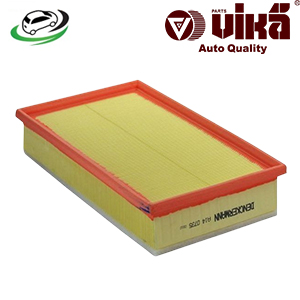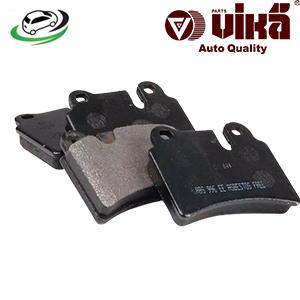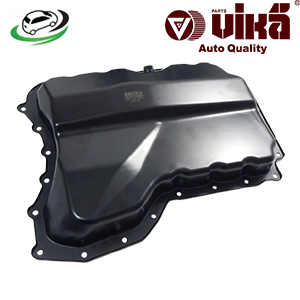-12%
Get Engine Lower Oil Pan AUDI A3 8P/8V/ Volkswagen Golf Mk6/Mk7 06K103600D
The engine lower oil pan, often simply referred to as the oil pan, is a crucial component of an internal combustion engine. It serves as the reservoir for the engine oil and plays a key role in the lubrication system. The oil pan’s design and functionality are integral to the overall health of the engine, as it helps ensure that the engine receives adequate lubrication and cooling. This article delves into the functions, construction, importance, and maintenance of the engine lower oil pan.
The Function of the Engine Lower Oil Pan
The primary function of the engine lower oil pan is to store engine oil. Engine oil lubricates the moving parts within the engine, reducing friction and wear. It also helps in cooling the engine by carrying away heat generated during combustion. Here’s a closer look at the functions of the oil pan:
- Oil Reservoir: The oil pan acts as a reservoir that holds the engine oil when the engine is off. This stored oil is then pumped through the engine’s lubrication system when the engine is running.
- Lubrication: As the engine operates, the oil pump draws oil from the pan and circulates it through various engine components. This oil lubricates the pistons, crankshaft, camshaft, and other moving parts, reducing friction and preventing premature wear.
- Cooling: The oil pan helps in cooling the engine by allowing the oil to dissipate heat. The oil absorbs heat from the engine components and carries it to the oil pan, where it can cool down before being recirculated.
- Oil Pickup: The oil pan is equipped with an oil pickup tube, which is a component that draws oil from the pan and feeds it to the oil pump. This ensures that the engine always has a supply of oil available for lubrication.
Construction of the Engine Lower Oil Pan
The engine lower oil pan is typically made from materials such as aluminum, steel, or composite materials. Its construction involves several key features:
- Material:
- Aluminum: Lightweight and resistant to corrosion, aluminum oil pans are commonly used in modern vehicles. They offer better heat dissipation compared to steel pans.
- Steel: Steel oil pans are more durable and can withstand higher impact forces. They are often used in heavy-duty or off-road vehicles.
- Composite Materials: Some oil pans are made from composite materials, which offer a balance of strength, weight, and resistance to corrosion.
- Shape and Design: The oil pan is typically a shallow, bowl-shaped component that attaches to the bottom of the engine block. Its shape is designed to maximize oil storage and provide a low center of gravity for stability.
- Drain Plug: The oil pan has a drain plug located at its lowest point. This plug allows for the draining of old oil during oil changes.
- Gasket or Seal: The oil pan is sealed to the engine block with a gasket or sealant. This prevents oil leaks and ensures a tight, leak-proof connection.
- Baffle System: Many oil pans include a baffle system or internal partitions. These help control oil movement and prevent oil from sloshing around, especially during hard cornering or acceleration.
- Oil Pickup Tube: The oil pickup tube extends from the bottom of the oil pan to the oil pump. It is equipped with a screen or mesh to filter out debris and ensure clean oil is delivered to the pump.
Importance of the Engine Lower Oil Pan
The engine lower oil pan is vital for several reasons:
- Engine Protection: By storing and circulating oil, the oil pan ensures that all moving parts within the engine are adequately lubricated. This reduces friction, prevents wear, and extends the lifespan of engine components.
- Heat Dissipation: The oil pan aids in cooling the engine by allowing the oil to absorb and dissipate heat. Proper cooling is essential for maintaining optimal engine temperature and preventing overheating.
- Contaminant Collection: The oil pan collects contaminants and debris that may be present in the oil. This helps prevent these particles from causing damage to critical engine components.
- Oil Storage: The oil pan provides a reserve of oil that is essential for the engine’s lubrication system. It ensures that there is always a supply of oil available for the engine’s needs.
Common Issues with the Engine Lower Oil Pan
Several issues can arise with the engine lower oil pan, leading to potential engine problems:
- Oil Leaks: Oil leaks can occur if the gasket or sealant between the oil pan and the engine block fails. Leaks can lead to low oil levels, which can cause engine damage if not addressed promptly.
- Cracks and Damage: The oil pan can become cracked or damaged due to impacts or road debris. This can lead to oil leaks and may require the replacement of the pan.
- Clogged Oil Pickup Tube: Debris or sludge can clog the oil pickup tube, restricting oil flow to the engine. This can result in low oil pressure and potential engine damage.
- Pan Corrosion: Over time, especially in vehicles exposed to harsh conditions or road salt, the oil pan can corrode. This can lead to leaks and reduced effectiveness of the oil pan.
Maintenance and Care
Proper maintenance and care of the engine lower oil pan are essential to ensure the longevity and performance of the engine. Here are some tips:
- Regular Oil Changes: Regular oil changes are crucial for maintaining the health of the engine and the oil pan. Fresh oil helps keep the engine clean and prevents sludge buildup.
- Inspect for Leaks: Periodically check for oil leaks around the oil pan and the drain plug. If you notice any leaks, address them promptly to prevent oil loss and potential engine damage.
- Check for Damage: Inspect the oil pan for signs of damage, such as cracks or dents. If you find any damage, have it repaired or replaced as needed.
- Clean the Oil Pan: During oil changes, clean the oil pan and remove any debris or sludge that may have accumulated. This helps ensure proper oil flow and prevents clogging of the oil pickup tube.
- Monitor Oil Levels: Regularly check the engine oil level using the dipstick. Maintaining the correct oil level is essential for proper engine lubrication and cooling.
Replacing the Engine Lower Oil Pan
If the oil pan becomes damaged or the gasket fails, it may need to be replaced. Here are the general steps involved in replacing the engine lower oil pan:
- Preparation: Ensure the vehicle is parked on a level surface and the engine is cool. Raise the vehicle using a jack and secure it with jack stands.
- Drain the Oil: Remove the drain plug from the oil pan and allow the oil to drain completely into a container.
- Remove the Old Pan: Disconnect any components or accessories that may obstruct access to the oil pan. Remove the bolts or fasteners securing the oil pan to the engine block. Carefully remove the old oil pan.
- Clean the Surface: Clean the surface of the engine block where the oil pan will be installed. Remove any old gasket material or sealant to ensure a proper seal.
- Install the New Pan: Place the new oil pan onto the engine block, ensuring that the gasket or sealant is properly aligned. Secure the oil pan with the bolts or fasteners.
- Reconnect Components: Reattach any components or accessories that were removed to access the oil pan.
- Refill with Oil: Replace the drain plug and refill the engine with the appropriate type and amount of oil.
- Check for Leaks: Start the engine and check for any leaks around the oil pan and drain plug. Ensure that the oil pressure is within the normal range.
Follow us on Facebook for more parts.



